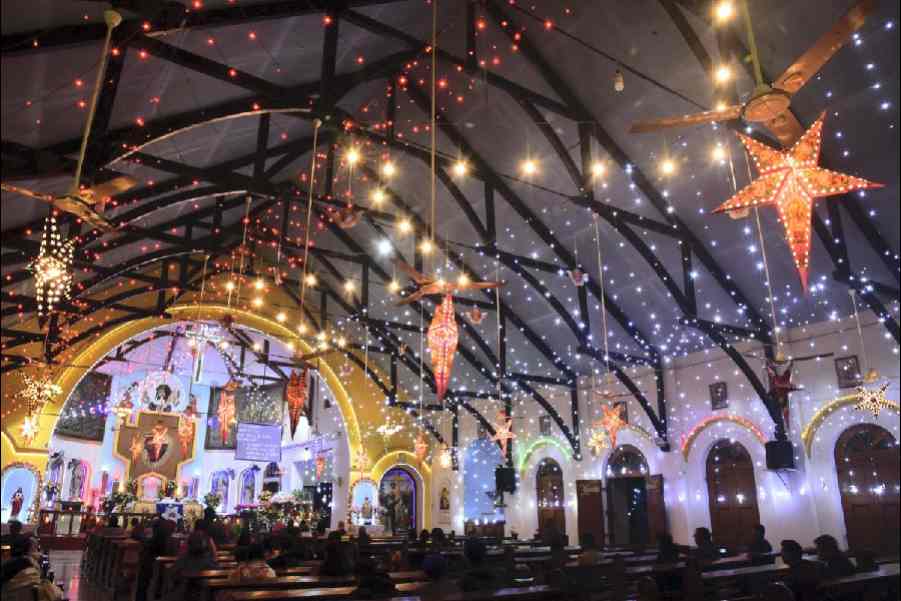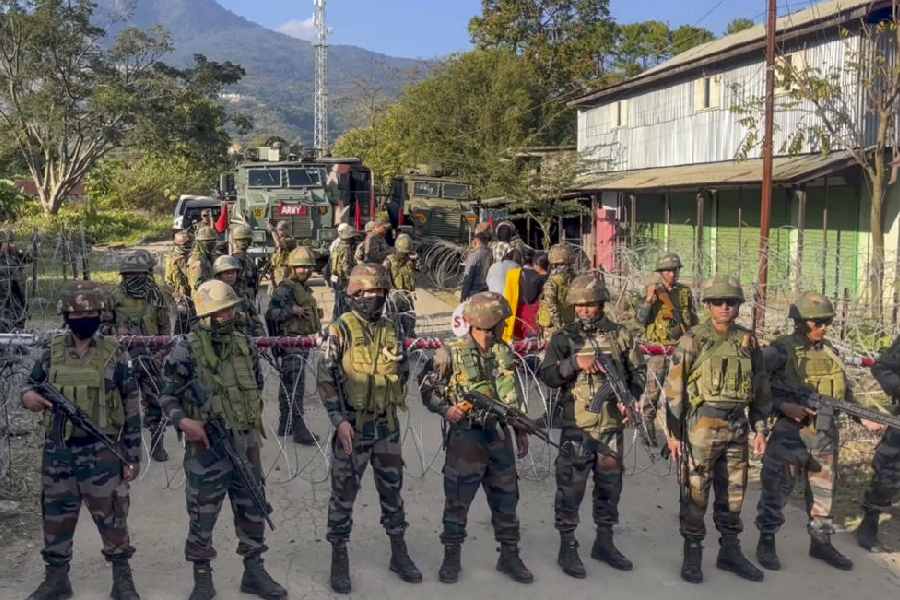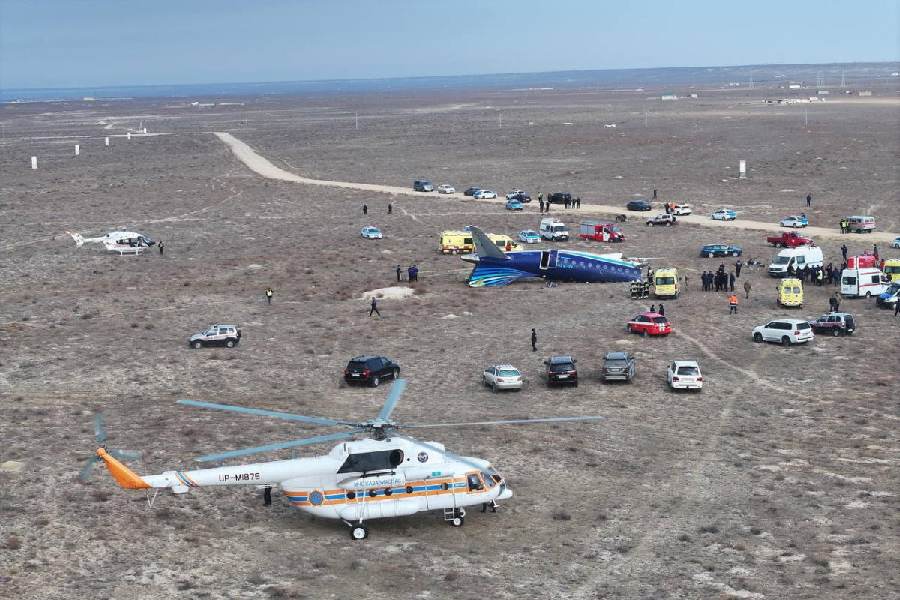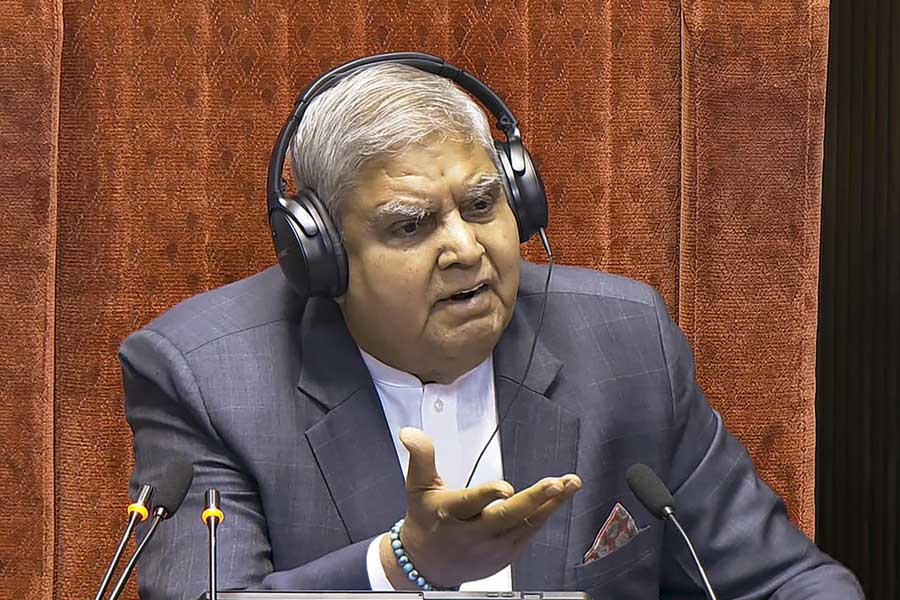Less than a week into Unlock 1, Gautam and Manju Bera find themselves staring at a blank slate as they never have before. The jatra actors lived, breathed and earned from the art form till the lockdown was imposed in India on March 25.
The Covid-19 outbreak had triggered the lockdown and social distancing became the new normal, leaving the couple, like thousands others in the state, out of performance and livelihood.
Residents of East Midnapore’s Khejuri, Gautam, 44, and Manju, 38, had met through the folk theatre form 25 years ago. Now, parents of a nine-year-old son, the couple said they couldn’t help but find pathetic similarities between their current predicament and a drama.
“It is like the virus and the cyclone have sucked all the momentum out of our lives. We have no alternative income sources. What are we going to do when we can’t get back on the stage?” asked Gautam, on a day when news channels beamed the return to business for Tollywood: Bengal’s commercial film industry.
“We cannot operate with social distancing. Nor do we have online alternatives, by definition. I fear in addition to our livelihoods, this might also be the final chapter of a long Bengali tradition,” he added.
Rup Kumar Ghosh, the joint secretary of the West Bengal Jatra Sammilani that represents a large section of those involved in the industry, says: “The livelihood of about 50,000 people, including actors, musicians and technicians, are at stake because of the pandemic-induced bar on public performances.”
Most of the 50,000 people associated with the jatra industry, mainly in rural belts, do not have alternative job skills. They become parts of the ensemble that tours rural Bengal to stage shows for no less than nine months a year.
Monsoon gives them a break from their otherwise hectic schedule, but the months are used to rehearse and plan new productions. It is also the time when teams are reorganised and they get advances against bookings that traditionally opens on Rath Yatra day every year.
East Midnapore and West Midnapore, the biggest hub of the art form outside Calcutta’s Chitpore, have approximately 5,000 registered artistes and technicians who are involved with over 100 jatra troupes.
Districts like Birbhum, East Burdwan, Hooghly and Murshidabad boast several teams that give employment to hundreds of people. Hooghly and Birbhum have about 13 each, while East Burdwan and Murshidabad count 20 troupes each. Ranging from actors to technicians, musicians and support staff, each team has the involvement of no less than 40-50 people.
The Covid-19 exposed the jatra community to a reality that it was not prepared for. Fast running out of their savings, the jatra troupe members realise that the show of life must go on despite the financial crunch.
Gautam, whose needs Rs 12,000 a month to run his family, has taken the plunge and got in touch with members of Khejuri panchayat. He asked them to enroll him under the rural job scheme that would help him earn Rs 204 a day for at least 100 days. This, he said, had become a necessity for his family to survive as his meagre savings have been hugely dented during the lockdown.
Veteran jatra artiste Gourhari Seth, 55, lives in Nandigram and almost echoes Gautam. His family includes wife, higher secondary examinee daughter and a younger son. They all are dependant on Seth’s annual income of Rs 1.5 lakh but Covid protocol that bars public gathering has come in the way of his livelihood.
“Though shooting has started in Tollywood, our future remains uncertain. My family runs on my earnings and my savings are under stress. I need to explore an alternative source of income,” Seth said.
“The jatra season is usually for nine months from September. The season ended early this year because of the lockdown and we have not planned our new productions in the absence of enquiries, forget bookings,” said Gautam, who said his last play had been financed by a producer for Rs 10 lakh. While the investment might sound like big spending, leading jatra companies earn anything between Rs 30 and Rs 50 lakh every season. Most of the big banner teams stage around 15-20 shows every month and the fees vary between Rs 20,000 and 50,000 for a show.
Artistes like Gautam are bracing for an emotional jolt in a couple of weeks, when the date of Rath Yatra (June 23) will approach. Jatra performers look forward to Rath Yatra as that’s the day when the largest number of bookings happen, giving a hint of how the year will pan out for them.
Akhay Duari has been a booking agent for jatra producers for more than six decades. He, too, is anticipating a bleak Rath Yatra this year.
“If no bookings happen on Rath Yatra day, it will be a huge setback for our community,” said Manju, who earns Rs 700 on average per performance.
Gautam said he earned Rs 500, in keeping with the traditionally higher wages for females in the profession: a reflection of historical regard and the complexity of artistic roles. More senior performers earn up to Rs 2,000 a performance for women and Rs 1,500 for men.
The people who are most sought after throughout the year and more so on Rath Yatra day are the organisers from across Bengal who closely review the new production for the season before taking a call on which team to book.
The organisers are also feeling the heat of the lockdown, consequent economic downturn and the new normal of ban on public gatherings. The concern of the jatra industry becomes worse when organisers say they can’t book in uncertain times.
East Midnapore’s Raghunathbari Rath Yatra Committee is known for its annual big ticket week-long celebration of the chariot festival that is spiced up with cultural events that include several jatra performances.
“We have cancelled celebrations, including jatras, this year because of Covid-19. The rath will not roll out,” said committee member Tarun Kar.
Organisers of Tamluk’s Chandra-Surya Club did not have any words of hope for the jatra industry. Though Durga Puja is a few months away, the club that hosts cultural event to coincide with Bengal’s biggest festival is unsure of how things will shape up.
“Our tradition has been to book jatra teams on Rath Yatra and get good discounts. By booking early, we get the opportunity to pick productions of our choice. But in such uncertain times, we do not know if we will be able to host our cultural festival during Durga Puja and, therefore, cannot risk making advance payments so early,” club secretary Bholanath Padiya.
Secretary of the West Bengal Jatra Academy, Tapan Sarkar, said: “Every year, the state government comes out with advertisement seeking applications for its one-time annual dole of around Rs 10,000 for economically weak jatra performers who have crossed 60. There is nothing to offer to younger artistes.”
Environment and public health engineering minister Somen Mahapatra, who represents Pingla in West Midnapore, termed the predicament of the industry “serious”.
“We hope to gradually arrive at a solution for the jatra community, just like the government has done for the film industry. It may take some time because of the nature of the trade and social distancing,” he said.











